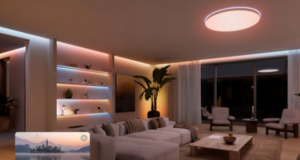
Waterproofing inspections aren’t mandatory everywhere – but even where they’re not, you might want to consider them. Find out why…

Waterproofing inspections can save you from very expensive repairs further down the track. Image by Brett and Sue Coulstock – Flickr.
One of the most common (and cripplingly expensive) problems with new houses and renovations is damage from improperly installed waterproofing in wet areas like kitchens, laundries, shower areas and other parts of bathrooms. Small mistakes or flaws are easy to overlook, and because waterproofing membranes are usually hidden beneath tiles, the damage from badly installed or failed waterproofing may not show up till it’s far too late to avoid serious damage.
Even if it is caught early, repairing damaged or faulty waterproofing can be complicated and invasive – especially in bathrooms, where you’ll probably need to remove tiles. Failed waterproofing will often go undetected for a very long time though, gradually leaking water into wall and floor cavities, encouraging the growth of mould, and in some cases rotting timber structural members and doing serious damage to the frame of your home.
Are waterproofing inspections mandatory?
New South Wales and Queensland are the only two states in Australia where new waterproofing installations must be inspected by a building surveyor by law. If you live in a different state, it’s still well worth the cost and effort to commission an inspection of waterproofing works – just to be on the safe side.
While waterproofing inspections do come at a cost, they’ll pay for themselves many times over if anything has been done incorrectly.
With what standards should waterproofing installs comply?
Waterproofing installations in Australia need to comply with the requirements set out in Australian Standard AS 3740 – Waterproofing of Wet Areas within Residential Buildings, and with the BCA Performance Requirement for Wet Areas. Waterproofing should always be carried out by a licensed, qualified waterproofer.
For more information about how to arrange inspections for your waterproofing installations, discuss the matter with your local council’s building services department or use the Australian Institute of Building Surveyors’ Find A Building Surveyor tool.





